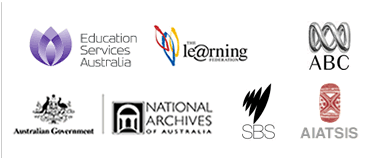Original classification rating: PG.
This clip chosen to be PG
Clip description
In interview and voice-over, James Leahy recollects the first time the Leahy brothers came across a new community of highlanders. He explains that, fearful of being outnumbered by large numbers of people they could not communicate with, the brothers felt they had to demonstrate their weaponry to show they could protect themselves and their possessions. Historical stills illustrate the numerous highlanders, and footage shot by Michael Leahy in the 1930s shows the Leahys shooting a pig. In interview, two highlanders (Toa and Tupia) who were the Leahys’ ‘gun boys’ (guards) relate how they were instructed by Michael Leahy not to fight or shoot anyone unless one of the Leahys’ men were hit by a spear or arrow. If that happened, then they were to shoot to kill.
Curator’s notes
The archival footage of the highlanders’ reaction to seeing rifle fire for the first time is riveting. They are visually disturbed, fearful and many run away. Throughout the time the Leahys were prospecting, highlanders did get shot and killed or injured when they tried to steal possessions or they attacked the goldminers.
Teacher’s notes
provided by 

This clip shows two Australian brothers, the Leahys, demonstrating the power of guns for the first time to people in the Western Highlands of Papua New Guinea (PNG) in the 1930s. The clip includes archival black-and-white photographs and Michael Leahy’s film footage of the newcomers killing a pig to convey the fearsomeness of the gun. It also includes interviews from the 1980s in which James Leahy and Highlanders Toa and Tupia explain that the pig killing was a strategy to ensure the protection of the Leahys and their trading goods. Subtitles are used.
Educational value points
- The clip provides firsthand accounts of contact between Australian gold prospectors and Highlanders in PNG in the early 1930s. There is archival film, photographs and footage of James Leahy and two Highlanders speaking of their earlier experiences. Footage from the 1930s is complemented by a 1983 interview with James Leahy explaining the motivations at the time. The Highlander ‘gun boys’ who were the Leahys’ employees describe the instructions they received about shooting.
- The shooting of the pig is presented as an example of the power of the Australian traders who wanted to convince the Highlanders of their superior strength so that they could prospect for gold safely. James Leahy explains that the Highlanders’ initial fear had quickly changed to a desire for the newcomers’ ‘treasure’ such as knives and axes, and so the traders felt vulnerable. The shooting led to the Highlanders’ fear of the gun as well as an awareness of its limitations.
- Focus on goods such as the steel axe suggests the importance of technology and trade in the experience of first contact between the white traders and the PNG Highlanders in the 1930s. The clip presents the Highlanders’ quick recognition of the value of these new technologies, which could make their clearing of the bush, gardening and building activities easier. Reference to the Highlanders bringing food reveals one of their items for trade.
- In this clip the Leahy brothers are documented as part of a process of colonisation and exploitation of Papua New Guinean resources in the 1930s, but only from their own perspective. The Leahys express 1930s attitudes that presumed their right to prospect for gold in order to build their own wealth. The traders also presumed the right to impose on the Highlanders their ideas about individual ownership of goods and to punish what they regarded as stealing.
- Language in the clip reflects colonial attitudes of the 1930s. In a 1983 interview, two Highlanders who were employed by the Leahys refer to Michael Leahy as ‘Masta Mick’. In the captions they are referred to as ‘gun boys’ irrespective of their ages. They recall Michael Leahy providing instructions about dealing with the ‘wild natives’. The identities of the men are acknowledged but they explain their role without revealing their own views about it.
- In this clip Bob Connolly and Robin Anderson combine a range of visual and sound techniques to create tension around the killing of the pig. The change from still photographs to the 1930s archival film of the pig being killed (which shows men moving rapidly back and children running away) is combined with music and the sudden sound of the gunshot to make the shooting the dramatic focus. Modern interview segments in colour provide background information about the scene.
Thanks to the generosity of the rights holders, we are able to offer Guns and pigs from the documentary First Contact as a high quality video download.
To play the downloadable video, you need QuickTime 7.0, VLC, or similar.
You must read and agree to the following terms and conditions before downloading the clip:
australianscreen is produced by the National Film and Sound Archive. By using the website you agree to comply with the terms and conditions described elsewhere on this site. The NFSA may amend the 'Conditions of Use’ from time to time without notice.
All materials on the site, including but not limited to text, video clips, audio clips, designs, logos, illustrations and still images, are protected by the Copyright Laws of Australia and international conventions. All rights are reserved.
When you access australianscreen you agree that:
- You may retrieve materials for information only.
- You may save, copy, print, distribute or download materials for your own personal use or for non-commercial educational purposes. Commercial exploitation of materials on this website is prohibited.
- The National Film and Sound Archive’s permission must be sought to amend any information in the materials, unless otherwise stated in notices throughout the Site.
ANY UNAUTHORISED USE OF MATERIAL ON THIS SITE MAY RESULT IN CIVIL AND CRIMINAL LIABILITY.
This clip is available in the following configurations:
| File name | Size | Quality | Suitability |
|
firstcon1_pr.mp4
|
Large: 20.7MB |
High |
Optimised for full-screen display on a fast computer. |
|
firstcon1_bb.mp4
|
Medium: 9.7MB |
Medium |
Can be displayed full screen. Also suitable for video iPods. |
Right-click on the links above to download video files to your computer.
Thanks to the generosity of the rights holders, we are able to offer this clip in an embeddable format for personal or non-commercial educational use in full form on your own website or your own blog.
You must read and agree to the following terms and conditions before embedding the clip:
australianscreen is produced by the National Film and Sound Archive. By using the website you agree to comply with the terms and conditions described elsewhere on this site. The NFSA may amend the 'Conditions of Use’ from time to time without notice.
All materials on the site, including but not limited to text, video clips, audio clips, designs, logos, illustrations and still images, are protected by the Copyright Laws of Australia and international conventions. All rights are reserved.
When you access australianscreen you agree that:
- You may retrieve materials for information only.
- You may save, copy, print, distribute or download materials for your own personal use or for non-commercial educational purposes. Commercial exploitation of materials on this website is prohibited.
- The National Film and Sound Archive’s permission must be sought to amend any information in the materials, unless otherwise stated in notices throughout the Site.
ANY UNAUTHORISED USE OF MATERIAL ON THIS SITE MAY RESULT IN CIVIL AND CRIMINAL LIABILITY.
Copy and paste the following code into your own web page to embed this clip:



 Share
Share





